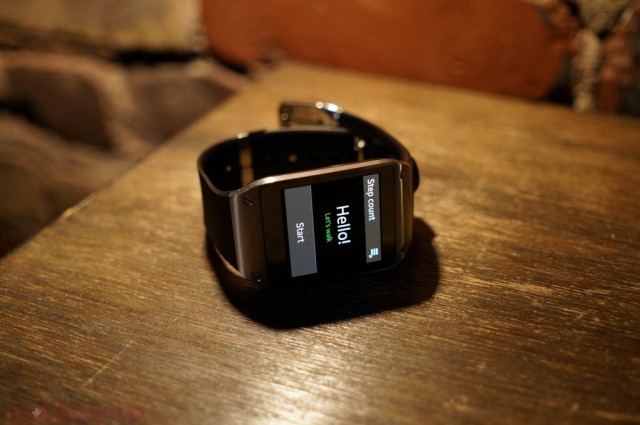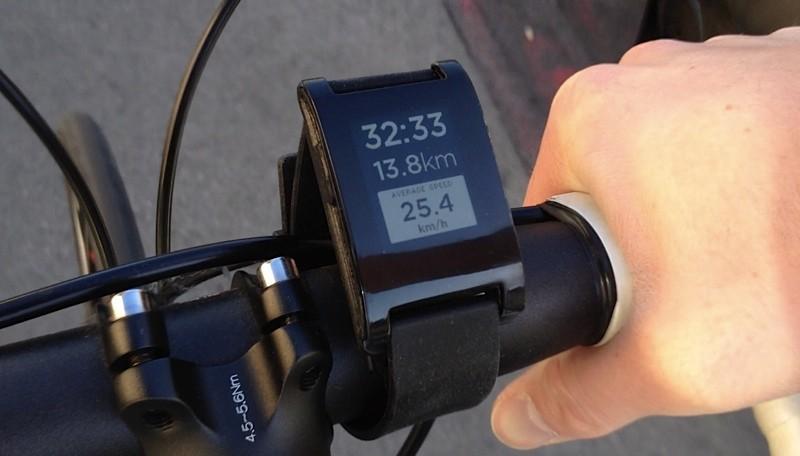
Whether they love or hate them, everyone has an opinion on the viability of smartwatches. The disparate range of opinions is a clear sign that we are on the brink of the next wave of computing. Wearable technology in general has the potential for being a game changer, with the smartwatch potentially leading that change.
I’m bullish on the success of smartwatches and have been an early adopter of these wearables since Kickstarter darling Pebble began shipping earlier this year. Recently, I made room on my wrist for Samsung’s Galaxy Gear, which I have to say is a pretty nice piece of arm candy.
And I am not alone. Analysts are predicting that smartwatch sales will rise steeply over the next couple of years. NextMarket Insights estimates that annual smartwatch sales will grow from 15 million units in 2014 to 373 million by 2020.
It’s true that these are very early days for smartwatches. One could compare the situation today to the pre-iPhone smartphone market. There’s also a lot of room for improvement: better battery life; more stable Bluetooth connectivity; easier interaction. It also means that there’s still a huge opportunity for one (or many?) major player to jump in and find success.
But one thing is certain: the timing is right for us to start walking around like Dick Tracy or Penny from Inspector Gadget. Here are five reasons why smartwatches are here to stay.

Reason #1: The “Big iPhone” Pattern, or Why Being Similar To Smartphones Is Key To Smartwatch Success
Cast your mind back to the iPad’s debut in early 2010? There were millions of skeptics skittish about the new form factor. Many were doubtful that people would spend money on “just a bigger iPhone.”
Fast forward to today where the iPad now makes up 20 percent of Apple’s revenue with 14.6 million units sold last quarter alone. Gartner expects that worldwide tablet shipments will increase by 53.4 percent in 2013 and will reach over 263 million in 2014. We are just three years past the iPad’s launch and it’s hard to deny the form factor’s success.
One of the reasons tablets have been so quickly adopted are their likeness to smartphones. The fact that the iPad was just a bigger iPhone sold us on our need for such a device. We were used to the touchscreen but saw value in using our favourite applications on larger displays, with more room to maneuver.
I see this same pattern developing with the smartwatch, but in the opposite direction; in many ways, the smartwatch is just a smaller smartphone. And like the “bigger iPhone,” I think we are ready for it.
Like the iPad, Samsung Galaxy Gear’s touchscreen is familiar to users right of the box. Swiping and tapping through menus and functions is understood from this wrist-sized screen, as it is with any sapphire glass surface we encounter today. The fact that you can pick up a Galaxy Gear and instantly know how to use it bodes well for the adoption of the form factor.
As smartwatches are companion devices, they grant hands-free access to all of the core applications you can’t live without on your smartphone: calling, emailing, texting, picture taking and more. Like the tablet, the smartwatch doesn’t need to do more than give us another way to interact with the features we use on our smartphone to be successful.
Reason #2: FOMO (Fear of Missing Out), or Why Feeding Into Our Notification Addiction Is All A Smartwatch Needs To Do
We are a culture suffering from connection addition.
Most of us can’t live without our smartphone. According to a recent Google Study, 35 percent of Canadians would give up TV before parting with their smartphones. And according to Psychology Today, 40 percent of the population suffers from a new anxiety condition called nomophobia, as in no-mo(bile)-phone-phobia.
We check our smartphones constantly, and we have especially become beholden to the notification chime. Our smartphone addiction is one of the major reasons why I believe smartwatches, and other wearable tech like smart glasses, are the logical next step in our technological adoption.
At the moment, smartwatches are primarily notification-driven. They let you know when someone is calling, when you’ve received an email or have an upcoming appointment. But they do this all without having to take your phone out of your pocket.
It’s a life-changing experience to see who is calling or quickly check a text message when both hands are holding grocery bags, for example. Or to be able to quickly drop your eyes to your wrist to see if the email you received is worth disrupting dinner for.
After just a few weeks of owning a smartwatch, I admit to checking my wrist before my phone; it just feels much more natural. I have become so reliant on my smartwatch, I panic when accidentally forgetting to put it on in the morning.
Smartwatches definitely don’t fix our notification addiction; if anything, they nurture it. But what they do provide is a much smoother, easier and more human way to satisfy the itch. And it’ll be for this reason alone that many will get one.

Reason #3: You Can’t Handle the Future, or Why Looking Like a Watch Is A Necessary First Step
Smartwatches are getting a lot of flack for not looking like our idea of “the future.” One of the biggest criticisms is that smartwatches, like Pebble or Galaxy Gear, appear too much like a regular watch. It seems that everyone is Apple will create a device similar to those futuristic concepts floating around the Internet. You’ve seen them: curved glass cuffs that look like they are straight out of a Sci-Fi TV show.
But take it from someone who has been walking around with a piece of future on his head for the last four months: no one is ready for the future. As a Google Glass Explorer, I have witnessed firsthand the negative reaction most people have of this aesthetic. I can count on one hand the number of people who said that they would feel comfortable wearing Glass in public. But if Glass looked like a pair of prescription glasses, they said, adoption would be much faster. This is why the partnerships with Ray-Ban and Warby Parker are so important to Google Glass.
Like Glass, smartwatches need to look like something we are familiar with, so looking like a watch is necessary right now. Once we become familiar with the form factor, I’m sure we will be ready for the cuff in no time.
I do agree with most of the pundits, however, that companies entering the smartwatch market need to have a much keener eye for design. Like Glass, a partnership with major fashion houses like Michael Kors, Movado or Tag Heuer could really spur mainstream adoption. But when it happens, I’d still expect these smartwatches to resemble a watch, because the form is familiar and comfortable.
Reason #4: Selfies While Eating Noodles in Chinatown With My Cat, or Why Slapping a Camera On Our Wrist Is A Key Selling Feature
I bet you never thought you would be taking so many pictures than you have with your smartphone. You also probably never thought that you would be spending endless hours following people on Instagram, looking at pictures they took of their cats. Instagram has over 130 million users and 16 billion photos have been shared since it launched in 2010.
Is taking pictures with a camera on your wrist a bit creepy? Absolutely, but only until the culture becomes used to it. Once that happens, you find that having a camera on your wrist is exactly what you need to feed your constant desire to document your life.
I was very skeptical of the Galaxy Gear “spy cam” at first. But it’s actually come in handy when you want to capture something in the moment and don’t have time to fumble with your phone. In this way, Gear shares the same killer feature which Google Glass has been known for: the ability to take quick, hands-free photos. This may not be the most innovative of features, but is one you may use more than you think.
Reason #5: There’s An App For That, or Why Leveraging The App Store Model Will Be A Deal Breaker For This Device
Like all successful hardware ecosystems, the app’s the thing. Your smartphone isn’t really smart without its accompanying software. These devices owe their success to the developers whose apps tell you the weather, play games and watch movies. The fact that the smartwatch employs the same model is the key to its success.
Right now, smartwatch apps are few and far between, but it’s still early days. We are already seeing some promise. Pebble is loaded with classic arcade games which are pretty awesome time wasters, and Samsung has courted some heavy hitters, including personalized news app, Zite, and social networking app, Path.
If the million apps in the App Store and Google Play are any indication for what is possible with smartwatches, it can only mean the hardware is going to get better and better.
MobileSyrup may earn a commission from purchases made via our links, which helps fund the journalism we provide free on our website. These links do not influence our editorial content. Support us here.


